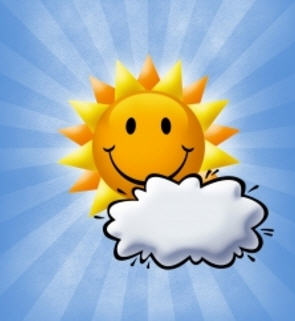How to Teach Question Structures


During your daily warm ups, if you decide to ask students questions, you can always ask about the weather and the vocabulary comes in handy during other activities too.
Warm up
Start off with your usual warm up and try to get students talking about seasons. Ask students what season they like best and see if anyone can explain why. This could elicit much of the vocabulary you plan to practice during the lesson so if certain vocabulary words come up, write them on the board. You can also talk about different activities students like to do during particular seasons and why some of them, such as snowboarding, cannot be done year round.
Introduce
Through your warm up activity, you may have been able to build a vocabulary list on the board which is good because it shows that some students are familiar with these words and will make the introduction easier. If you are unable to elicit any weather related vocabulary, you will have to spend more time on your introduction and practice sections. Once you have completed the warm up, introduce your weather related vocabulary using weather flashcards. Some basic words you may want to include are sunny, cloudy, raining, snowing, hot and cold. Drill these new words using choral repetition first and then call on students to say them individually.
Practice
After students have had some practice pronouncing these words, conduct a short activity to give them some further practice. You can do this by giving each student a small version of one of the flashcards. Have students arrange their chairs in a circle and remove one chair. The student in the middle can read his card and the students with the same card should remain seated while the other students have to change seats. This way, the word being said should always change and no one will have to sit still for long. When making these mini weather flashcards, it is important to use the same images that you used on the large flashcards if possible because consistency will help your students memorize the words and associate them with particular images.
Introduce
Next ask students “How’s the weather?” which automatically introduces the structure for the question of this lesson. When students reply “Sunny!” you can say “That’s right! It’s sunny.” thus modeling the sentence structure you want them to practice. Use the flashcards to have students practice the model sentence using different words. If you want students to say “It’s snowing.” the snow flashcard should say snowing on it. You want to give students as much practice as possible with the form of the word they will need for the lesson.
Practice
Students can use the same cards they had earlier or maybe switch with a partner for the next activity. Ask students to walk around the room asking “How’s the weather?” and answering the question based on the card they have. Students should try to find someone to say each weather word listed on the worksheet and get signatures from the students they talk to.
Produce
Now you are going to want students to produce some material on their own. You can have short writing activities where students talk about their favorite and least favorite weather. You can also ask them to say what they like to do when it’s sunny, cloudy, or raining for instance. This will give students a bit of writing practice and at the end of the activity you can have volunteers read their responses to the class for more speaking practice.
Review
For a review activity, try to include another recent topic, for instance, days of the week into your weather lesson plan. You can do this easily by creating an activity about weather forecasts. Students can work in pairs where each student has a weekly weather forecast with some blanks. Students have to talk to their partners about the weather on different days to successfully complete their weekly forecast. Students should take turns asking and answering questions. The structure of the question for this activity would be “How’s the weather on Monday?” while the sentence structure could be “It’s sunny.” or “On Monday, it’s sunny.”
Weather is definitely a topic that ESL students can talk about often because it affects them on a daily basis.
Give them plenty of opportunities to use weather related vocabulary throughout the course to keep these words fresh in their minds. See our Weather Worksheets collection for more wather and seasons worksheets.